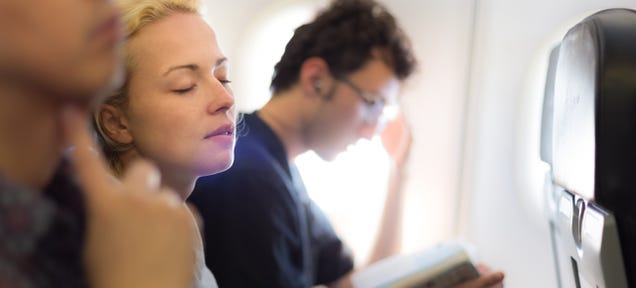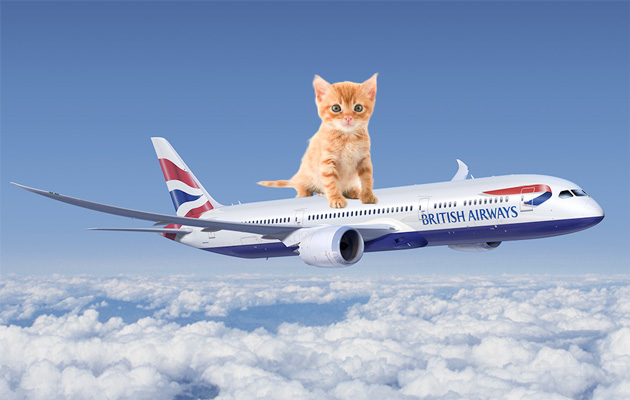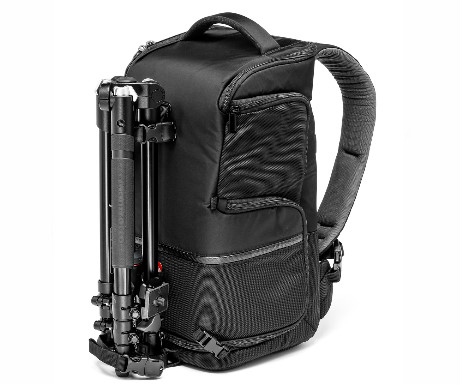Recent headlines and this column report that Airbus is considering
re-engining the popular A330 with GE Aviation GEnx or Rolls-Royce Trent
1000-TEN power plants. A New Engine Option and other changes would
improve the A330’s economy by an estimated 10% percent after offsets for
increased drag and weight.
But the A330 isn’t the only Airbus airplane being considered for new
engines made popular by the A320neo family. Tim Clark, president and
chief operating officer of Emirates Airlines, urged Airbus to improve
efficiency of the giant A380 with engine technology found in newer
generation aircraft.
How feasible is an A380neo? What are the technological issues? Would
there be enough of an economic gain? And is there a market for an
A380neo?
The A380 of today
The A380 has been hailed as a highly efficient airliner since it went
into service 2008, assuming the giant plane can be filled. But only six
years later, the first voices have been raised that this will not
continue to be the case should the continuous improvements that have
been flowing into the airframe not pick up speed.
The launch of the Boeing 777X also brought focus on the state of the
A380 come the latter part of this decade when the 777-9X enters flight
testing in advance of its planned 2020 entry-into-service. Tim Clark
expressed that “it is time that the A380 gets an injection of the new
technology which is now becoming available for the A320/737 in the form
of GTF/LEAP and GE9X for the 777X. “
Before we look into what can be done short-to–mid-term to inject
improved efficiency, let’s establish the baseline as it exists today.
The A380 is considered by some the most efficient way of flying
passengers between two long haul points if there is enough of demand.
The competition today is the Boeing 777-300ER and 747-8i. (Qantas
Airways is dropping some A380 flights that have 50% load factors,
demonstrating the aircraft is inefficient if the demand is
insufficient.)
Let’s assume we want to transport passengers between San Francisco
and Hong Kong, one of the longer flights which are made non-stop in both
directions. Going West, it takes a Cathay 777-300ER 15 hours and going
East, 12 hours, the difference being due to prevailing headwinds going
West. For our check, we will use the more demanding of these legs, which
then works out as the equivalent of flying 7,200nm. To compare the
three different aircraft in a fair way, we need to load them to the same
payload, in our case passengers with luggage. We will not consider
cargo in this initial analysis. The leg chosen is not one which allows
much weight for cargo, but cargo certainly belongs to a complete
analysis of an airplane and we will point out where it will affect any
conclusions.
When comparing the standard three-class seating numbers between the
OEMs, it is clear these are not made to the same standards of comfort.
Airbus has admitted that the A380 is too lightly loaded at 525
passengers. The 777-300ER at nine abreast and 365 seats is equipped with
a comfortable 18’’ economy class at 32’’ pitch but the business class
is modeled with a non-standard 48’’ pitch. The 747-8i at 467 seats is
not laid out to any comfort standards comparable to the other two. To
ensure an apples-to-apples comparison we have equipped all aircraft with
the same three-class cabin with a standard seating consisting of first
class at 81’’ pitch, business class at 60’’ pitch and economy class with
32’’ pitch. Seat widths are 37’’, 22’’ and 18’ respectively and the
ratios of the different premium seatings vs. economy are kept the same.
Here the aircraft are listed with the in-service year and with their
respective payload capabilities:
Click on all illustrations to enlarge.
Table 1
Today’s costs
Fuel constitutes about 50% of long-haul costs; therefore we will
focus on this main cost parameter for this comparison between the
aircraft. In the table below we have now added the trip fuel burn over
our chosen 15 hour flight. Since we compare aircraft of vastly different
sizes, our normal cost per aircraft mile comparison makes little sense.
We have kept the fuel cost per available seat mile and complemented
with the format that Lufthansa uses: litre consumed per passenger and
100km flown. (These figures represent nominal aircraft with our
standardized cabin. The figures therefore cannot be compared with the
Lufthansa published litre fuel/100km, which is for aircraft with their
specific seating):
Table 2
As can be seen, all aircraft are in the same fuel cost range with the
A380 having 5% worse fuel costs per seat than the 777-300ER but 3%
better than the 747-8i. The differences in direct operating costs are
augmented by the 300ER’s lower engine maintenance costs and the revenue
side has a superior cargo capability. Why, then, does Emirates tout the
A380 as its premier aircraft? Because for an airline, an aircraft is
judged in part by the difference between Revenue per Available Seat Mile
(RASM) and Cost per Available Seat Mile (CASM). Emirates has passenger
load factors which are considerably higher for the A380 than other
aircraft. This more than compensates for any difference in fuel burn,
cargo capacity (cargo pays less well than passengers) and engine
maintenance cost. This is valid as long as the fuel consumed per seat
mile does not differ more than today.
If we look forward to the turn of the decade and introduce the 777-9X
into the table, it is clear why Tim Clark is now saying the A380 will
have to be updated come 2020. The new 777-9X will consume 20% less fuel
per seat then the -300ER, according to Boeing, and then the cost
equation will change.
Table 3
The 777-9X has a 13% better fuel consumption per seat then today’s
A380. Add to that its 27 empty LD3 positions once the baggage LD3s have
been loaded and the business case for a A380 is getting challenged. It
shall be noted that we now have the economy section for the 777X at 10
abreast, which is below our 18’’ seat-width rule. Should we have kept
this rule, the per seat fuel difference would have been -8%. Given the
small comfort improvements that -9X brings for 10 abreast economy—an
increase of about one-half inch per seat, Boeing calculates—and the
likelihood that most airlines will fly it at 10 abreast, we therefore
show the upcoming threat to the A380 as a 10 abreast variant (already
nearly three quarters of the airlines today go 10 abreast for the
-300ER).
Updating the A380
As can be seen, the enhanced A380 should be available in a new
version before or around 2020. There are principally three ways Airbus
can prepare the A380 for the next decade:
- Rely on incremental improvements to engines and aerodynamics and make the cabin denser;
- Update to engines available before 2020, improve aerodynamics and make the cabin denser; or
- Update to engines available after 2020, improve aerodynamics and have more freedom with cabin density.
Of these improvements, we will discuss the aerodynamic improvements
and denser cabins first since these are common factors for all three
alternatives.
The A380 is a construction of a somewhat different shape compared to a
classical “wings with tube” airliner. This is a result of wanting to
transport up to 800 people in a vehicle which is constrained to a
maximum dimension of 80 meters by 80 meters for airport operations, the
famous 80 meter box. This forced Airbus to build the A380 with a two
stories fuselage and with a wing with an unusually low aspect ratio. At
7.8, it is well below the present state of the art, which is more like
9.0 (777-300ER) or 9.5 (787, A350). The drag due to weight (induced
drag) is therefore higher than normal. This is compensated by good
values for the normally dominant drag component, the drag due to size
(wetted area and form drag). In fact, the figures for drag show the
reverse trend compared to normal airliners with drag due to weight
dominating with 50% at average cruise weight and the drag due to size
down at 40%. Thus the A380 compensates a restricted wing with good
packaging of the passenger compartment. Its short two-story passenger
compartment and elaborate main landing gear restricts its cargo
capability however, something is shares with the 747-8i.
Aerodynamic improvement to reduce induced drag is therefore a primary
goal for any A380 update. It will take the form of wingtip treatments
to increase the effective span. As the wing is already at maximum
possible span and was not designed for folding wing-tips, the remaining
option is large winglets that spread in the vertical domain. These can
take the form of single blade (Sharklets) or multi-blade (Scimitar or
perhaps “Sharkfins” in Airbus parlance) devices that alleviate induced
drag as a function of their physical size. We have assumed winglets of
4m size in our analysis, which enhance the efficiency by 3.5% over the
present wing fences on long-haul flights.
To get more revenue generating passengers on board, Airbus is
studying 11 abreast seating on certain parts of the A380 main deck. This
will increase the coach capacity by about 30-40 seats without
compromising the 18’’ seat width standard, according to the company. We
will include such a denser cabin when we compare future A380 variants to
today’s aircraft.
New engines
We will now examine the perhaps most important component of an
efficiency improvement program for the A380, the engines (see table
below for a list of all candidates):
Table 4
First the incremental improvement of the existing Trent T900 and
EA7200. The T900 has historically trailed the EA7200 by about 1% in
specific fuel consumption. The present T900EP is said to close that gap
and Rolls Royce have another improvement package in the works which will
add another 0.8%, T900EP2. The size of these improvements are typical,
about 1% every three years; thus we would expect to see a total of 2%
improvement from now to 2020.
A second alternative is to take an existing engine from a later
generation. Suitable engines in thrust and weight would be 787 engines,
the GE GEnx-1 and Rolls Royce T1000. These deliver an improvement of
4%-5% over the present A380 engines in the variants that are being
developed for the 787-10. With these engines being certified in 2015,
theoretically an A380neo can see an EIS in 2016, sooner than a new
engine could be engineered onto the A380. A more likely A380neo target
EIS would be 2018, the wish date of Emirates for an upgrade (the airline
starts to take delivery of the new batch of 50 then). The 787 engines
are some 250kg lighter then the lightest A380 engine (T1000) and as they
have less fan diameter their nacelles will be slightly smaller and
lighter.
A third alternative would be a totally new development based on e.g.
RR RB3039 or a PW GTF. Such engines offer an additional 6%-7% efficiency
improvement over a 787 engine derivative. Their drawback would be
higher weight and drag due to their larger fans and their 60:1 pressure
ratios. Another drawback is that they will not be available until after
2021. Additionally there is the question whether there is a business
case for an entirely new engine serving only the A380, a niche aircraft
for which the 20 year market demand before or after a neo is a matter of
diverse opinions.
The different engine alternatives are shown in the table where we
have also included the A330 engines as the thrust requirement for an
A330neo is similar to the A380 and there is a certain probability that
development of an engine variant and nacelle would be shared between the
two programs (Table 4).
There is a lack of an entry from PW in the table, mainly because it
has not publicly presented the outline of an alternative. For a 2021
time frame, PW could well be in the running. The question would then be
with what programs could they share the development costs as a re-engine
of the A380 would potentially only represent a small number of engines
for PW. It can also be seen in the table that GEnx-1 somewhat trails the
T1000-TEN in efficiency, mainly because Rolls Royce have decided to do
three updates of the T1000 and GE have only announced to be doing two.
It would be no big problem for GE to inject some LEAP technology into
the GEnx-1 for an A380/330 neo project and close that gap.
Much has been written about the work involved in converting 787
engines to bleed variants. In fact these are bleed engines. These
engines put out compressor bleed air to deice the nacelle inlet and they
use compressor bleed ports to correct compressor handling problems at
low RPM. In essence bleed variants are rescheduled variants of the
existing engines, not a big redesign as many speculate.
Which way to go
If we put the three alternatives on the A380 and list them side by
side with the present and future Boeing competitor we will get the
following table:
Table 5
There are a number of conclusions that can be drawn:
A380-PIP
Airbus can almost achieve Emirates wish for a 10% improvement in
efficiency per seat until 2018 with a combination of 11 abreast economy
cabin on the main floor, improved aerodynamics and incrementally
improved engines. This variant would beat the 777-300ER in per seat
efficiency as long as a 300ER runs at nine abreast. If we change this to
10 abreast, the 300ER passes the A380-PIP with 3%. It shall once again
be pointed out that we only look at passenger capability here.
Under-floor cargo is the 777’s strong point and it will improve the 777s
earnings in a real situation. The A380-PIP would not match a 777-9X in
per seat efficiency but it would be within 4%, both using denser cabins
than today. Once again higher cargo capability will improve a 777X
business case, especially if seasonal fluctuations reduce the A380 load
factors over, for example, winter months.
A380neo16
With an additional upgrade to 787 engines we gain another 5% in trip
fuel burn and therefore also seat fuel burn as all improved variants
share the denser cabin. This variant is fractionally more efficient than
a 777-9X and would be attractive for routes where one can fill an A380
also after 2020. There is no projected aircraft that can reach the per
seat economics of a well loaded A380neo16, and this is what Emirates
route planners have found.
A380neo21
If the engine upgrade of the A380 would wait for Rolls Royce or PW
engines of the 777X generation (GE might be restricted by its 777X
engagement, see A350 engine sharing problematic below), it would gain
another 5% in fuel economy over the A380neo16 variant. While this is
attractive it has more complicated project and business model
implications. The A380 is not a high volume program and it is not
projected to be for the 20 years remaining after a neo. It would thus at
best create a market for an engine program of some 2,000 engines, or
roughly 400-500 airplanes, plus spares. Should this be divided between
two manufacturers like today, we talk about 1,000+ engines per engine
program. Given the uncertainty of A380 sales numbers this is not a
viable business case for a new engine development; costs would have to
be shared with some other platform.
Finally:
Sharing with an A330neo is ideal as the A330 and A380 have the same
thrust requirements. It is doubtful an A330neo can wait until 2021,
however, due to market pressure—EIS is being discussed for 2018. This
leaves the A350 as a partner program for an A380neo21. Here, the thrust
and therefore engine size requirements do not fit well. A new engine for
A350 should ideally cover 80-105klbf as an A350-1100 is a likely
development. Detuning an engine designed for 100klbf by 25% results in a
substantial loss of efficiency, both in terms of specific fuel
consumption and size/weight. The A350 is also constrained as to which
models GE and PW can be allowed to bid for; only Rolls Royce would have
access to all variants due to their A350-1000 exclusivity. In summary an
A380neo21 is less straight forward then an A380neo16 with higher
investments and risks for the engine manufacturers.
Finally, we note that none of these analyses consider the prospect of
a stretched A380, the -900. Airbus does not seem in a hurry to define
such a development. We therefore focused on updates to the existing -800
model.
The best Return on Investment for the engine makers is a common
engine on the A330neo and the A380neo, and the timeline desired by
Airbus for the A330neo all but dictates a choice of the GEnx or Trent
1000 TEN, with the resulting application to the A380neo.
Our data, and analyses by customers who have evaluated the 777-9 vs
the A380 (and 747-8i), indicate a 10-abreast 777-9X has better seat mile
costs then the much larger, current A380 and the 747-8i. Thus, if
Airbus is going to maintain an economic advantage with its four engined
airplane vs the twin-engine 777-9, an A380neo is a must.
By Leeham Co EU
| Leeham News and Comment







































